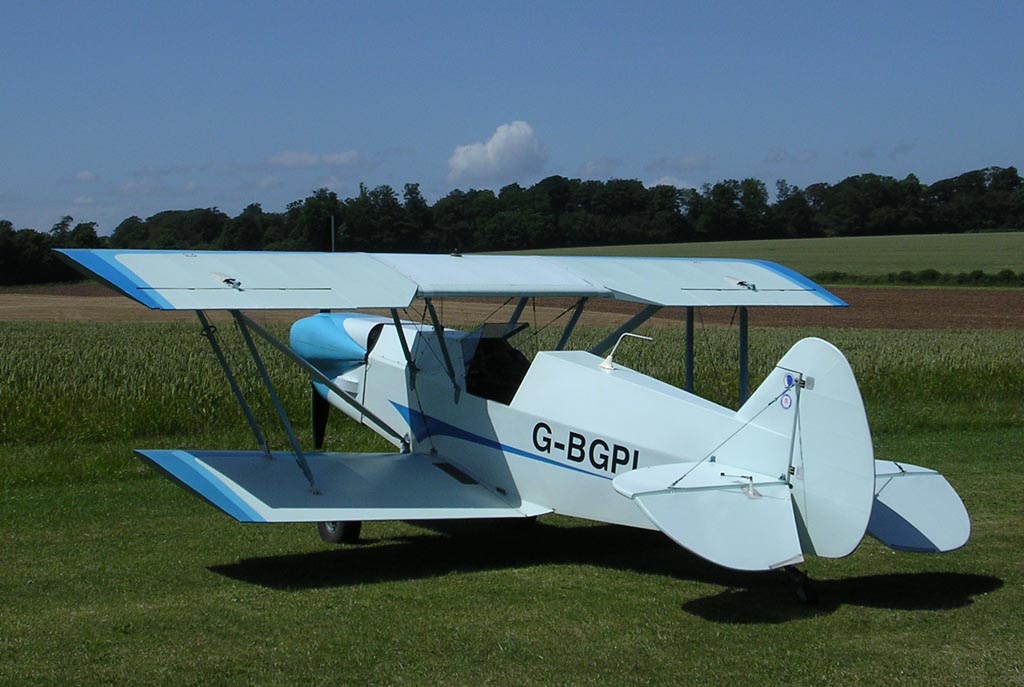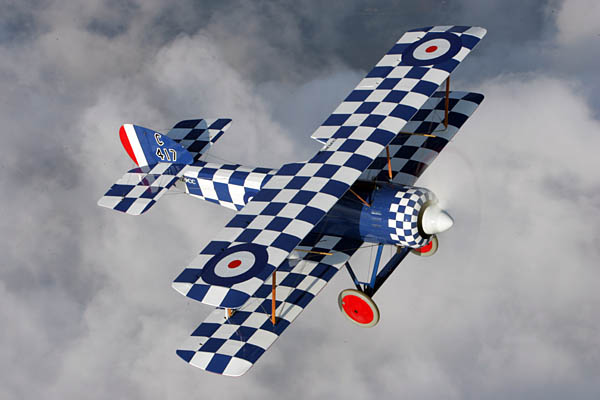Biplane Lore
There’s just something special about two wings…
If you took a survey of aviation enthusiasts and asked them to describe the ideal airplane, you would find a significant group of them who would say that any “real” airplane has two wings and lots of wires. Many of these would add that it needs to have open cockpits too. Now, we’re not knocking monoplanes, but face it… biplanes have a magical, irresistible appeal. To some extent, they remind us of the early days of aviation – when flying was seen as a romantic adventure that only a few men and fewer women dared to live out, risking their lives to fly noisy machines made of wood and covered in fabric – sometimes with a purpose, but often simply for the pure joy of flight. Even the Wright Flyer was a biplane. Biplanes conjure up images of aerobatics… who hasn’t enjoyed seeing someone really wring out a Pitts Special at an airshow? We can’t forget the roots of display aerobatics in the barnstorming era of the 1920’s and 30’s, when pilots in WWI-surplus biplanes began to establish the basis of both general and commercial aviation as we know it today.
“There’s just something mighty special about a biplane!”
The biplane was there during the Golden Age of aviation… and it’s just as golden today. Things have changed much since then… yet the biplane continues on, stronger than ever. Some folks don’t seem to realize that it never went away. Sure, there aren’t any supersonic biplanes, and Boeing isn’t likely to hang a second set of wings on the 787. And biplanes have been called impractical. Yet the Soviet-designed Antonov AN-2 – the largest single-engine biplane in the world – was built by the tens of thousands, many of which are still in daily service. The Pitts Special is celebrating over 50 years as a premiere aerobatic aircraft, and the Steen Skybolt is more popular than ever. The biplane-only class is very popular at the Reno air races, and Jimmy Franklin has even mounted a turbojet engine underneath his 1937 Waco UPF-7. There’s just something mighty special about a biplane!
Aviation lovers know that it’s not just about speed and fuel efficiency. They know that flying is about much, much more. Though the decades have taught us well and aviation is now the safest mode of transport available, the romance and wonder that aviators knew back in the early days is still here, calling to us in the magical song of wires stretched tightly between two wings.
Biplane Vignettes…
- UK Pilot Barry Plumb was so inspired by the first Pitts Special that was imported into the UK that he designed and built this neat little single-seat bipe. Built of wood between 1975 and 1986, he calls it the Plumb BGP1. Top span is 16 ft, lower span is 14 ft, gross weight is 800 lb. and it’s braced with struts. Power originally came from an 1834cc VW engine, which was replaced by a 2200cc 80hp flat-four Jabiru in 1998. This photo is from 2004. Barry says flying the BGP1 gives him “a great deal of pleasure.” We bet it does! (Barry Plumb photo)
- Steve Culp, already well-known for his beautiful Culp’s Special biplanes, really outdid himself by building twelve Sopwith Pups… combining his love of aerobatics and biplanes with the romance of a World War One fighter! This is the first one, seen at AirVenture 2004. Unlike the original version with “only” 80hp, this one has over four times that – a 360hp M14P radial lurks inside the cowl. Climb performance should prove to be mind-blowing, to say the least! (Jim Koepnick photo)

